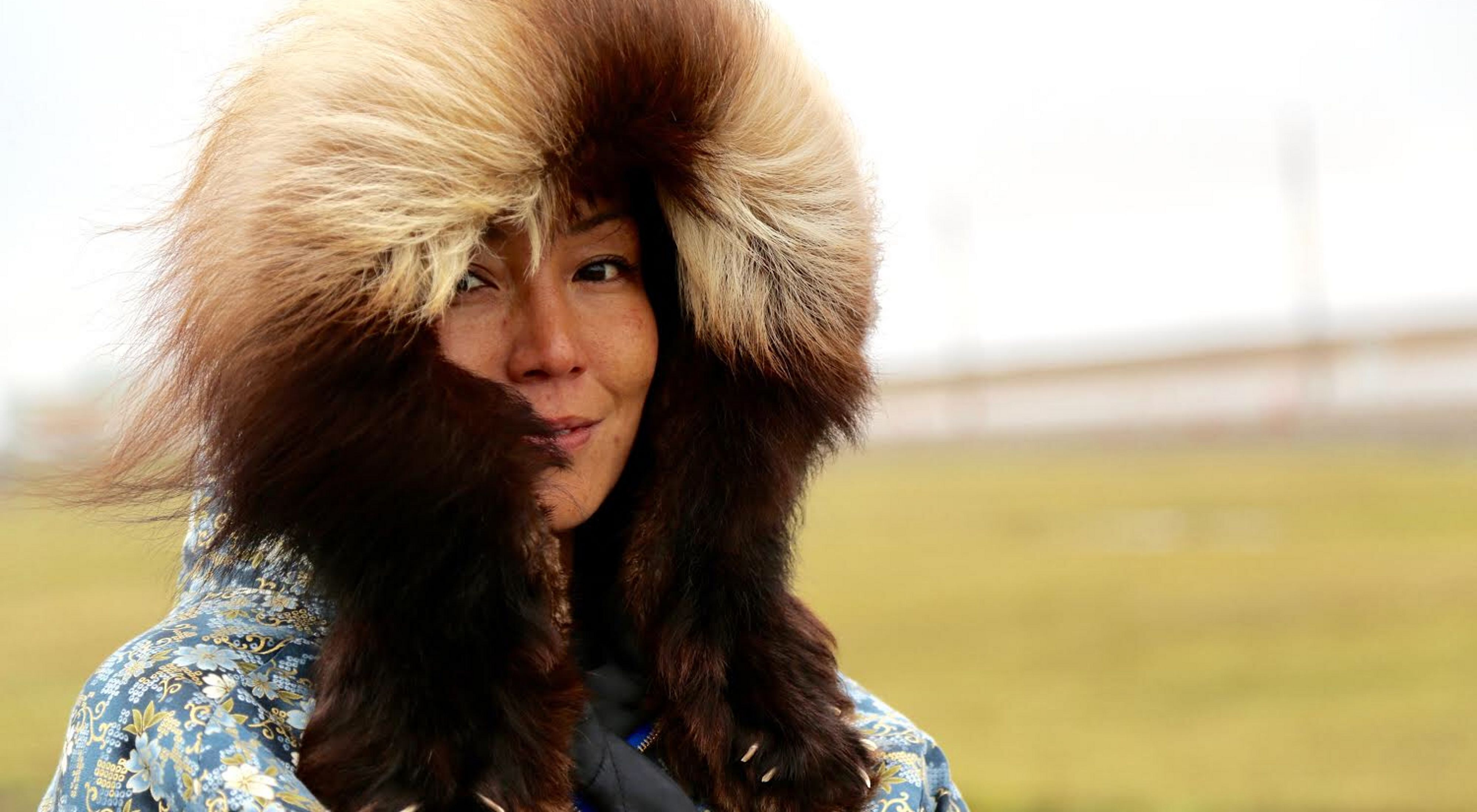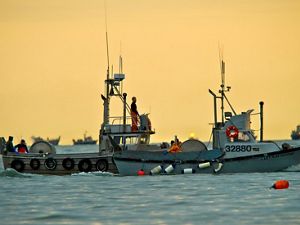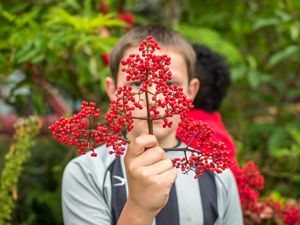Why This Story
Women from across Alaska—rural and urban, Indigenous and non-Indigenous—have come together to accelerate solutions at a time when women’s perspectives, ideas and connections are vital to helping Alaska communities adapt to the challenges ahead.
All around the coastal village of Quinhagak, Alaska, everywhere you look, the land and the sea have a way of offering up something you can eat. There’s salmon, moose and caribou, depending on the season. And even in the lean and chilly days of earliest spring, Jacki Cleveland, like many in her village, loves a particular dish that pairs two wild delights. Tundra ponds in springtime are the place to gather a favorite water-loving plant known here by its Yup’ik name, kapuukar.
Meanwhile, from the sky above, flights of geese appear on their journeys north. The thought of freshly harvested wild geese, served up in a soup with fresh kapuukaraq—akin to a garden-grown leek—brings a smile to Cleveland’s face.
“We love to eat those two together,” she says.
It’s a priceless tradition of spring—nothing bought from a shelf in the store could ever replace it. And when does spring come to Quinhagak?
"With climate change it's harder to predict," says Cleveland, a filmaker who's documenting how climate change affects tradition in a forthcoming film titled "Ellavut Cimirtuq (Our World Is Changing)."
Indigenous Communities Feel the Impact of Climate Change
Quinhagak, pop. 700, lies at the western edge of the vast delta formed by the mighty Yukon and Kuskokwim rivers. It’s among the world’s largest deltas—in North America only the Mississippi Delta can compare. Commonly known as the Yukon-Kuskokwim Delta, its winters are now 8 degrees warmer than they were in 1949. Spring comes sooner.
“In some years the ground and the water don’t freeze up for winter travel. It is affecting our food security and our subsistence way of life,” Cleveland says, noting that important food traditions revolving around the harvest of traditional foods including wild salmon, ptarmigan and caribou are showing signs of stress related to climate.
“We’re just getting hit in so many different ways. We’re going through all of it, meaning erosion, flooding, warming temperatures and melting permafrost beneath us,” she says.
Experiences like these inspired people like Cleveland to launch a new movement called Alaska Women’s Adaptation Network. Dozens of women from across the state—rural and urban, Indigenous and non-Indigenous—have come together with The Nature Conservancy and the SEED Lab of the Anchorage Museum to accelerate solutions at a time when women’s perspectives, ideas, and connections are vital to helping Alaska communities adapt to the challenges ahead.
“I care too much to be a bystander on climate change,” Cleveland says. "I mean, I’m living climate change. I’m in it whether I want to be or not. It’s affecting my life, my family’s life, my whole community’s life.”

Op-Ed
Always Getting Ready
In an op-ed titled "Always Getting Ready: Alaskan Women and a Changing Climate," Katie Basile and Andrea Akall'eq Sanders of Southwest Alaska tell why the Alaska Women's Adaptation Network has come together to mobilize communities across Alaska.
We can remember reading about “global warming” in our sixth grade science books in the ‘90s. It was a small mention, perhaps a paragraph long, something meant to explain but not alarm.
Fast-forward twenty-five years and our climate is changing in real time.
Temperatures reached a scorching 91 degrees in our hometown of Bethel, Alaska, last summer. Smoke from nearby fires was so pervasive passengers in small aircraft could barely see the wide, silty band of the Kuskokwim River from overhead.
Our salmon were found belly-up in the river. Biologists later confirmed that they died of heart attacks from the heat.
From Newtok to Quinhagak to Kivalina, Alaskan communities are scrambling to deal with rapid erosion, melting permafrost and flooding.
If we had any doubt in our minds, recent reports confirm that 2019 was the hottest year on record in Alaska, and the past decade is the hottest in human history. Yet Gov. Dunleavy disbanded the climate change response team last February, as he pushes for more extractive development.
Recently, women from dozens of communities, organizations and sectors came together as the Alaska Women Adaptation Network (AWAN) to spark statewide action on climate adaptation efforts. Our first meeting took place in November 2019 and was hosted by the Anchorage Museum SEED Lab and The Nature Conservancy.
During our two-days together we were reminded by Jackie Schaeffer of Kotzebue that, “Alaska’s Indigenous people were visionaries, planners and adaptable. We had to be! And we still are. This change is not new to us.”
As women, we discussed how predominantly white, patriarchal and colonial systems are leading us to the brink of climate disaster and that we must abandon those systems in order to solve the climate crisis. The leaders of a successful climate movement will come from diverse backgrounds and incorporate indigenous ways of knowing as solutions to the climate crisis. We must look to cultures whose values and traditions follow ecological law and adopt those ways of being.
From their own localized and cultural frames, Indigenous communities have intact “geographic intelligence” as the experts of their places, and as knowledge bearers. The support needed from local, state, and national leaders is tremendous – but with the use of place-based knowledge to drive how they collectively adapt, Alaska Native communities also set an example for others.
We discussed the need to restore balance in our relationship with our planet and localized environments, as we adapt we also remember and revive a way of life that sustained Alaskans before statehood was a thing.
At the AWAN meeting we also discussed the many efforts going on in the state to deal with the impacts of climate change. Alaska is rich with skilled experts, knowledgeable Elders, institutions and organizations working hard to mobilize communities. One area of need we identified is an easily searchable way to track all of these efforts and resources. There may be repeated efforts happening or a lack of collaboration simply because we don’t know about each other's work. A widely distributed database would get the word out and help communities identify the resources they need.
Once we have a better grasp of the big picture of issues facing Alaskans and the solutions communities are coming up with we can identify parallel needs and advocate with one voice, clear and loud.
The heat is upon us. There is no denying the need to get organized and work together to adapt to a changing climate. Upterrlainarluta “always getting ready” is a Yup’ik expression of a lifestyle centered on preparing. Preparing for seasonal changes, being adaptable and resilient are at the core of many Indigenous cultures. We are fortunate to have access to these values to rely upon.
Our coastlands are vast, our rivers mighty, our climates extreme. Those are realities that unite us from region to region. Our environments are places we belong, contribute to, and care for, so that future generations can also experience this Great Place. This foundation is what motivates us to act as Alaskan Women – in the midst of climate change – in defense of our homes, our families and our communities. Alaska is a place we care deeply about, so as elected leaders sit idle, turn a blind eye, or worse undermine progress in their pursuit of development, we organize. We come together to mobilize our communities and amplify our stories and needs.
Andrea Akall’eq Sanders (Yup'ik) is TNC's Global Director for Conservation in Partnership with Indigenous Peoples and Local Communities, from Alaska and based in Oahu. She is also co-founder and president of Native Peoples Action and was born and raised in Mamterilleq - Bethel, Alaska.
Katie Basile is a documentary filmmaker, photographer and climate justice storyteller. She was raised in the Yukon-Kuskokwim Delta of Alaska where she continues to live and work today.
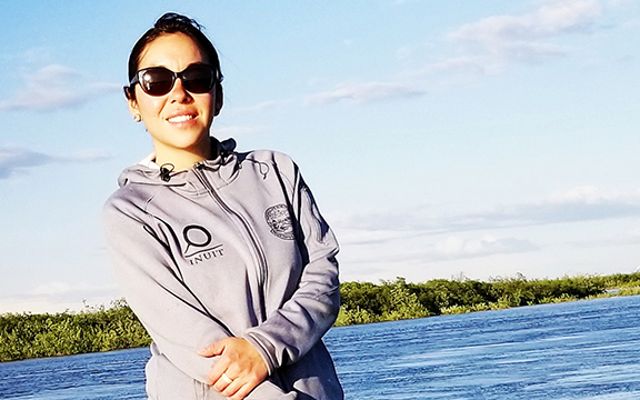

The Power of Women's Collaboration
The Alaska Women’s Adaptation Network (AWAN) is gaining from the collective power of 30 women who have come together to address the challenges of climate change by:
- identifying and exploring equitable and inclusive strategies
- designing and sharing innovative ideas
- strengthening and broadening people networks
As AWAN members, Andrea Akall’eq Sanders and Katie Basile explain in a recent op-ed, "Always Getting Ready: Alaskan Women and a Changing Climate," this is a catalyzing moment. The Alaska Women’s Adaptation Network has identified key issues to advance:
- Clean energy policy
- Federal tax on carbon
- State economy dependence on resource extraction
- Community adaptation planning
- Climate science
- Climate justice
“Women who are leaders in their communities across Alaska are coming together in a network capable of leading the state through a challenging new era. Climate leaders everywhere can learn from their collaborative and inter-disciplinary way of addressing the changes now facing our communities,” says Stephanie Holthaus, The Nature Conservancy in Alaska’s director of external affairs.
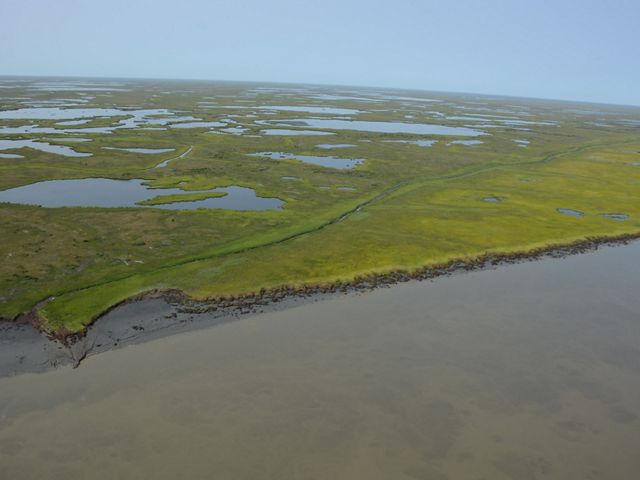
Adapting to the Challenges of Climate Change
While the Alaska Women’s Adaptation Network may be newly formed, the commitment from its members is not. To their inaugural gathering they brought passion and distinct ways of leading from their own communities.
“It felt like we were able to be very productive and cover a lot of ground and have that continuous momentum with the short time we had with each other,” Cleveland says.
In communities like hers, people are seeing changes, and the network is providing a platform for sharing experiences and knowledge.
“Climate change has been this domino effect of other effects,” Cleveland says. And this has her wondering about how changes in nature are affecting people in communities like hers.
“I know for sure our people have always been sharers, we’ve always been a giving culture. A lot of what we’re sharing is food. Gift giving has always been about food. That was the highest level of gift giving,” she says.
Today, she wonders if the gift of traditional food—like kapuukaraq—means even more.
“Our food is harder to get,” she says. “Or we’re getting less and less of that food source. Or that food source is moving away.”
Quote: Jacki Cleveland
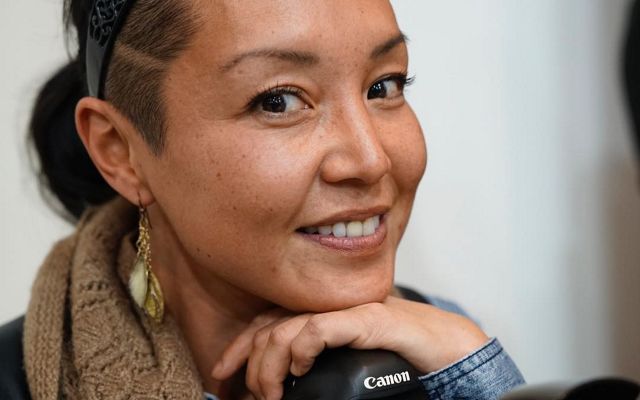
I care too much to be a bystander on climate change.
A Gift to Future Generations
Paradoxically, Cleveland finds climate change sometimes provides opportunities even as others go away.
“There’s always a balance to everything,” says Cleveland.
In recent years, Quinhagak’s eroding shorelines revealed long-buried artifacts from a village site dating back 500 years. In a unique partnership between the Qanirtuuq Inc., the Alaska Native village corporation in Quinhagak, and archeologists from the University of Aberdeen, Scotland, elders and young people are now working together to immerse in Yup’ik history and culture at the world’s largest collection of Yup’ik artifacts at Quinhagak’s Nunalleq Cultural and Archaeology Center. The archeological project is, in a sense, a gift to future generations in her village.
“For our younger generation it’s suddenly 'more cool' to be a Yup’ik dancer or to replicate artifacts by carving, weaving and sewing,” she says. “There’s a whole cultural revitalization that’s coming out of it.”
